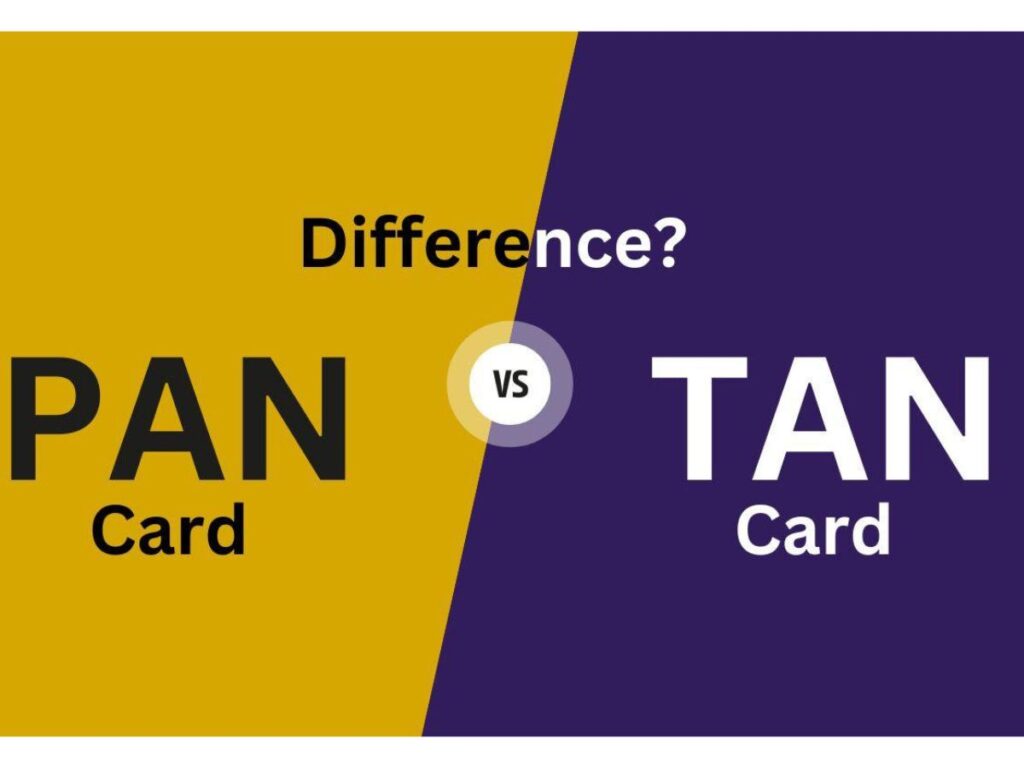
Application for TAN/PAN
Each taxpayer must have a PAN, which is a 10-digit alphanumeric number. It is employed to monitor monetary exchanges and stop tax avoidance. For the purpose of filing income tax returns or conducting high-value transactions, individuals, businesses, and other entities must apply for a PAN.
TAN is a 10-digit alphanumeric number required by entities responsible for deducting or collecting tax at source (TDS/TCS). It is mandatory for employers and businesses that deduct tax before making payments like salaries, contractor fees, or rent.
PAN v/s TAN
The PAN card number, which is issued by the Income Tax Department, consists of 10 digits as indicated on the 49A form. A penalty of INR 10,000 is applicable for the Income Tax Department. Similarly, the TAN number is also issued by the Income Tax Department and contains 10 digits as specified on the 48B form, with a penalty of INR 10,000 applicable for TDS.
What is PAN?
A 10-character alphanumeric code known as a PAN (Permanent Account Number) is given to people, businesses, and other organizations. Its main functions include monitoring taxable financial transactions and maintaining tax system transparency.
PAN is necessary for:
- submitting income tax returns
- Creating a bank account
- Purchasing or disposing of assets above a certain threshold
- obtaining taxable income (such as dividends, interest, and salaries)
- Making a credit card or loan application
It is a distinct identifier that doesn’t change over the course of the PAN holder’s life.
TAN: What is it?
The 10-character alphanumeric TAN (Tax Deduction and Collection Account Number) is unique to organizations that collect or deduct taxes at the source (TDS/TCS). In order to deposit deducted taxes with the government, employers, businesses, and organizations that make specific payments, such as salaries, interest, or contractor fees, need to have a TAN.
TAN is required for:
- TDS deduction on payments
- TDS return filing
- Giving payees TDS certificates
Penalties may be imposed for failing to obtain a TAN when deducting taxes.
Procedure for PAN and TAN Applications
You can apply online or offline for both PAN and TAN.
Online Procedure:
- Go to the official websites of UTIITSL or NSDL (now Protean).
- Select the relevant application form:
- Indian citizens’ Form 49A (PAN)
- Foreign nationals’ Form 49AA (PAN)
- TAN Form 49B
3. Enter the information and attach the necessary files:
- Identity Verification
- Evidence of Address
- Photo the size of a passport (for individuals)
4. Use an online payment method to pay the relevant fee.
5. For tracking purposes, note the acknowledgment number after submitting the form.
Procedure Offline:
- You can pick up the form in person at PAN/TAN centers or download it from the official website.
- At the closest TIN Facilitation Center, manually complete the form and turn it in with the required paperwork.
Delivery and Processing Time
PAN or TAN submissions are typically processed in 15 working days. The applicant’s address is where the card is mailed. For the majority of uses, e-PANs are also accessible and legitimate.
In conclusion
In order to adhere to India’s tax regulations, PAN and TAN are necessary. TAN is required for those in charge of tax collection or deduction, while PAN is used by individuals and organizations to monitor financial transactions. Maintaining efficient financial operations and legal compliance is facilitated by the timely application and appropriate use of these figures.
